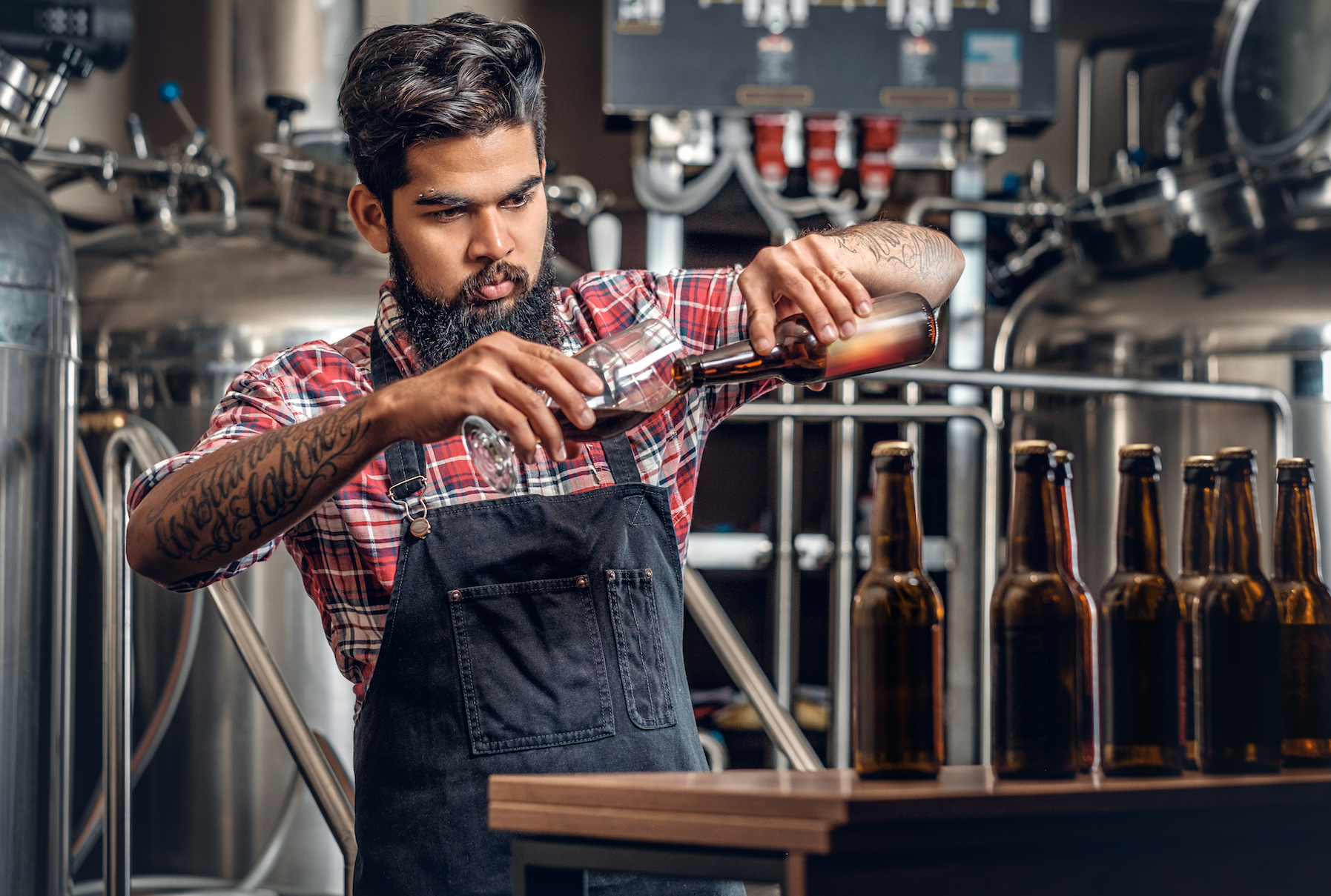
Could reusable bottles ever make a comeback in the United States?
In the United States, we’re used to recycling our glass and plastic bottles and getting 5 to 10 cents back in return. But returning large reusable bottles emptied of beer for a refund at convenience, liquor and grocery stores is commonplace in Mexico. If you buy a liter of Tecate say at a small liquor store, you’re told that the price is more than on the label because you’ll get a refund upon returning the beer bottle. Some of the bottles have obviously been cleaned before, with a clear line of wear across the brown glass.
The practice of returnable bottles is common in Madagascar as well, where you get beer not so much in shops as roadside stands where they sell THB, Three Horses Beer or Gold in returnable bottles.
The first place I experienced returning a bottle of beer was in Ecuador where usually there is only one choice in bottled beer, a large one or a small one. Returnable beer bottles is common enough in Germany, too. According to The Atlantic, in Norway, 95% of all beverage containers sold are returned to stores for recycling.
The practice of reusing bottles makes good sense and it has always made me wonder with a bit of frustration, why don’t we do this in the US? Of course reusing bottles was common place in the United States once upon a time as well. According to Container Recycling Institute, the ubiquitous disposable can showed up in 1938 and within 10 years comprised 11% of the beer market in the United States. Reusable bottles dropped to 86% of the market in that same time while non-reusable bottles rose to 3%.
Over time, the use of refillable bottles for both soda and beer dropped off steeply. Soft drink bottles were 100% refillable in 1947, according to Grass Roots Recycling Network, and by 2000, less than 1% of soft drinks were bottled in refillable containers.
In 1960 there were 4,519 bottling plants operating in the U.S. creating a decentralized system where beverages were bottled relatively locally, cutting the cost of shipping and allowing a returnable bottle system. In the case of soft drinks, Pepsi and Coca Cola bought up many of the independent bottling companies and consolidated their bottling plants, creating further distances to ship a more uniform batch of products. Longer shipping distances diminish the benefit of refillable glass bottles. By 1997, there were only 342 bottling plants in the US.
Campaigns by steel manufacturers producing steel cans and glass manufacturers promoted production of throw away containers in the 1960s. The throw away containers in turn seemed to make the returnable bottles less attractive to consumers, promoting more reliance on bottles and cans tossed as soon as they’re drained. Initiating a refund for returned non-refillable bottles in many states also seemed to make refilling old bottles even less attractive as one could get money for recycling rather than reusing.
The thing that’s strange is that unlike soda, beer has become much more of a locally produced phenomena much to the surprise of some business people. According to an article by Cherian George writing for the Stanford Graduate School of Business, there were 43 beer firms operating in the U.S. in 1983, but as of the middle of 2000, there were 1,400. According to the Brewers Association, as of 2017 there were 6,266 craft breweries, 202 regional craft breweries, 3,812 microbreweries, 2,252 brewpubs and only 71 large non-craft breweries in the US. 731 microbreweries opened in 2017, while only 101 closed, 264 brewpubs opened and 64 closed.
The numbers are encouraging for those of us who enjoy craft beers of merely a selection of different tastes. Research has shown that even as large beer companies try to create more unique flavors of beer, consumers demand true microbrews. Most of the breweries to enter the market in the US in recent years have been microbreweries or craft breweries.
As microbreweries gain importance in the U.S. beer market, more people are drinking locally or regionally. With different dynamics, less distance to ship empty bottles, maybe we could get a second chance to have more reusable bottles. If Americans can learn to drink more locally, maybe their sense of nostalgia if not their common sense may teach them to treat used bottles differently. Maybe there will be a future where hipsters and college students line up to return bottles on Sunday mornings.
—
By Zach Fitzner, Earth.com Contributing Writer













